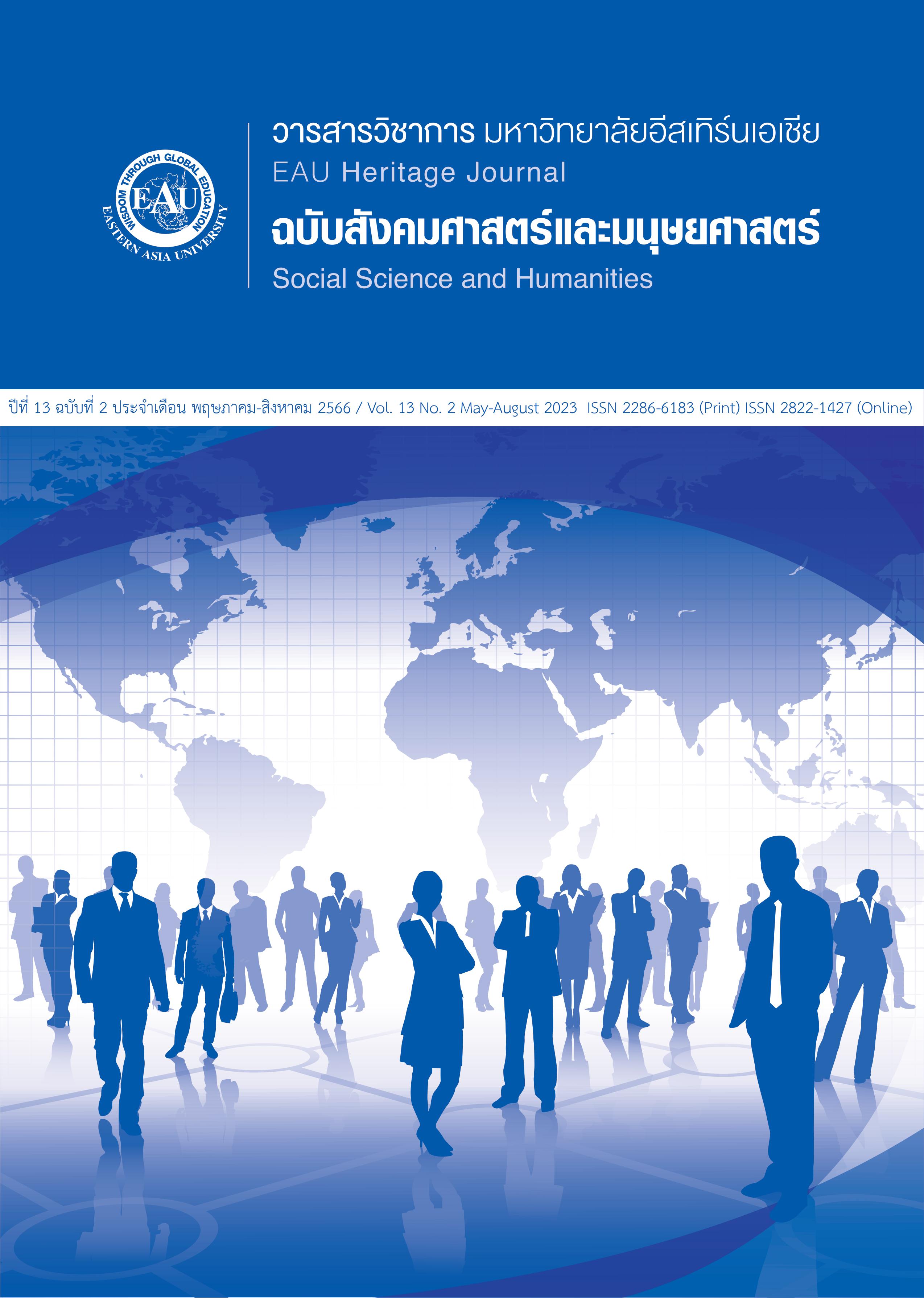Cross-Cultural Work Competencies Development for Graduates in the 21st Century
Keywords:
competencies development, cross-cultural work competencies, 21st centuryAbstract
This academic article explores the principles of cross-cultural competency development for graduates in the 21st century. In the 21st century, globalization and technology have brought people and cultures closer together than ever before. As a result, cross-cultural work has become more prevalent, and the ability to work with diverse people is becoming an essential skill in the new working world. Therefore, it is crucial for higher education institutions must prioritize the development of cross-cultural competency in their graduates. The development of cross-cultural competency is a continuous process, with three distinct phases. Phase 1 involves creating a cross-cultural competency model that is required to effectively work with diverse people. Phase 2 assesses the current competency of graduates while phase 3 focuses on developing and improving these competencies by applying the Competency Based Learning (CBL): The process of determining results to determine desired results, specific cultural factors that lead to the need to adapt to behaviors and cross-cultural abilities in a multicultural context. Conforming to the concept of 21st century skills. Higher education institutions must equip their graduates with the necessary skills to work effectively in a globalized world. By developing cross-cultural competency, learners can communicate and collaborate across cultures, and effectively navigate diverse environments.
References
Abbe, A., Gulick, L. M., & Herman, J. L. (2007). Cross-cultural competence in army leaders: A conceptual and empirical foundation. USA.: US Army Research Institute for the Behavioral and Social Sciences.
Chuanwan, C. (2009). Model of teacher competency and educational personnel. Bangkok: National Institute for Development of Teachers, Faculty Staff and Educational Personnel. (in Thai)
Chunpen, N. (2012). Development of indicators and a scale for measuring teachers’ cross–cultural competence: Testing measurement invariance by teachers’ background. Educational Research and Psychology, Faculty of Education. Chulalongkorn University. Bangkok. (in Thai)
DuBrin, A. J. (2011). Human relations for career and personal success (11th ed.). London, United Kingdom: Pearson.
Eckel, A. (2014). Cross Cultural Competence (CCC) from cultural understanding to cross cultural competence. Retrieved from http:// www. cimic-coe.org/products/conceptual-design/cimic-innovation/advanced-cultural -competence-aac/cross-cultural-competence-ccc/.
Hajjar, R. M. (2010). A new angle on the U.S. Mitary’s emphasis on developing cross-cultural competenc: Connecting in-ranks’ cultural diversity to cross-cultural competence. Thousand Oaks, CA: Sage Publications.
Intarasopa, W. (2012). Development of instructional leadership competencies of Small-Sized School Administrators (Doctoral dissertation). Educational Administration, Faculty of Education. Chulalongkorn University. Bangkok. (in Thai)
Junvith, P., & Sasiwuttiwat, S. (2013). Human capital development for better productivity. Annual academic seminar 2013: New development model: Towards quality growth based on productivity improvement. Bangkok: TDRI.
Khunphonkaew, J. (2014). Ready to work across cultures?. Retrieved from
https://www.bangkokbiznews.com/blogs/columnist/105929 (in Thai)
McClelland, D. (1973). Testing for competency rather than for intelligence. American psychologist journal, 28(1), 1-14.
Office of the Civil Service Commission. (2005). Deployment of resource management capabilities human. Seminar documents: Performance of government officials, 31 January 2005. Bangkok: Office of the Civil Service Commission. (in Thai)
Office of the Higher Education Commission. (2011). Strategies for Thai higher education in preparation for becoming an ASEAN Community. Retrieved from www.tm.mahidol.ac.th/th/ asean/ASEAN15-Plan.pdf. (in Thai)
Office of the Higher Education Commission. (2017). Internal education quality assurance guide higher education 2014 B.E. Nonthaburi: Parbpim Limited Partnership. (in Thai)
Panich, V. (2015). Ways to create learning for students in the 21st century. Walailak journal of learning innovations, 1(2), 3–14.
Paris, C., Johnston, J., Hughes, S., McCoy-Fisher, C., Severe, C., Reid, P., & van Driel, M. (2011). Framework for cross-cultural competence and learning recommendations. In DEOMI 8th Biennial EO, Diversity, and Culture Research Symposium, December 6-8, 133-151 Florida: Patrick Air Force Base. https://bit.ly/3IWHcOI
Pittayapongsakorn, N. (2017). Change attitudes towards Thai education (End), Bangkokbiznews. Retrieved from https://tdri.or.th/2017/10/education-paradigm-shift-2/. (in Thai)
Pongsrirojana, S. (2015). The challenges of Thai higher education toward ASEAN community in the year 2015. Romphruek journal, 33(1), 25-55. (in Thai)
Rasmussen, L. (2016). Cross-cultural competence: Engage people from any culture. Retrieved from http://www.globalcognition.org/cross-cultural-competence/.
Sinthunava, K., & Pokpong, S. (2019). Important factors for cross-cultural experiential learning. Journal of graduate studies in Northern Rajabhat Universities, 9(2), 63-76. (in Thai)
Sirimai, K. (2012). Work competencies. Retrieved from http://competency.rmutp.ac.th/. (in Thai)
Sompongtum, C. (1997). Development of operational competency: Core competencies. Journal of educational administration Burapha University, 1(1), 25–41.





